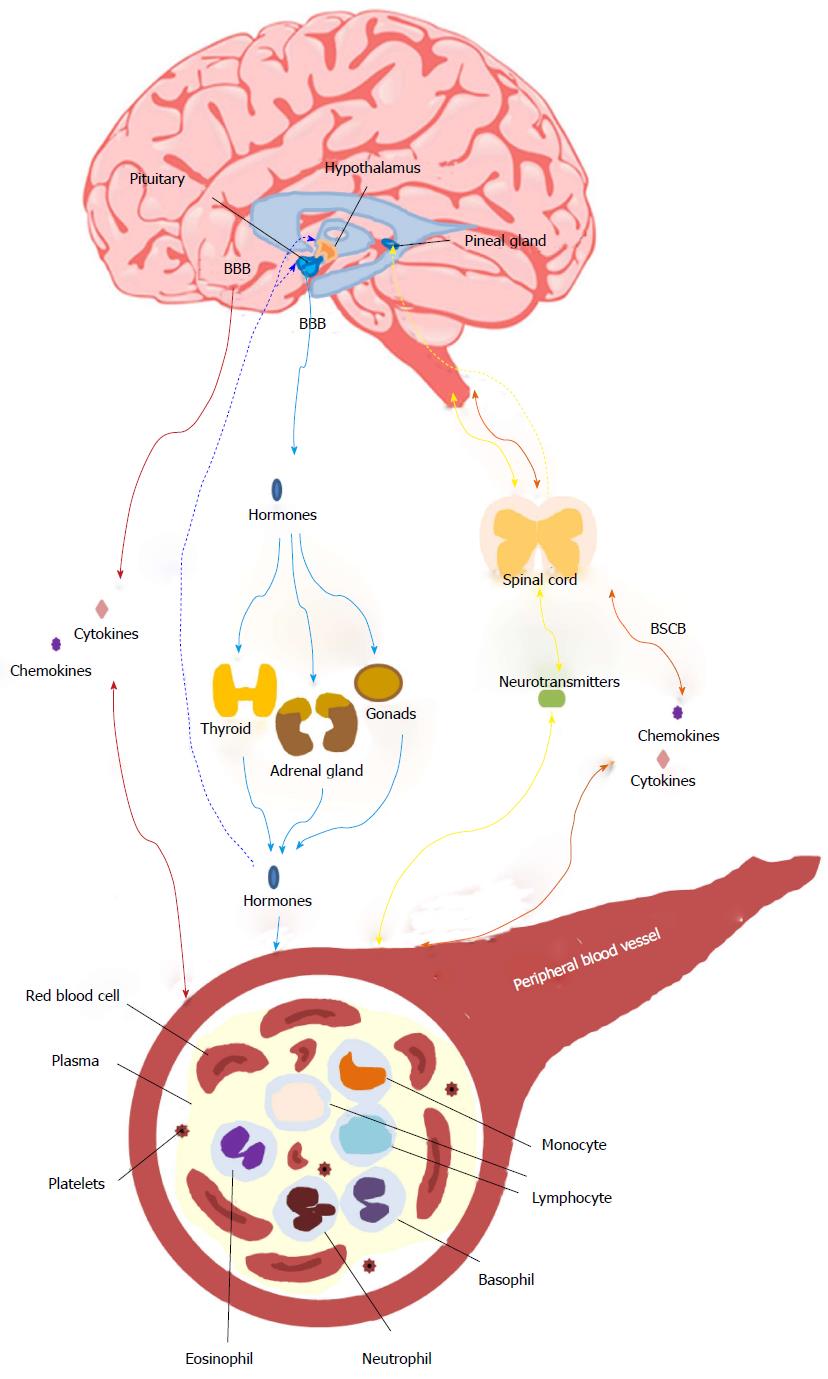Copyright
©The Author(s) 2016.
World J Psychiatr. Mar 22, 2016; 6(1): 102-117
Published online Mar 22, 2016. doi: 10.5498/wjp.v6.i1.102
Published online Mar 22, 2016. doi: 10.5498/wjp.v6.i1.102
Figure 1 A schematic representation of central nervous system-peripheral blood tissue interactions.
CNS stress may influence gene expression, DNA methylation, and cell metabolism in the peripheral blood via cytokines, neurotransmitters, or hormones with different transportation methods. Cytokines or chemokines can transport across the BBB (red lines) or BSCB (orange line) either from CNS to peripheral blood tissue or vice versa. The hormones are exerted by CNS and transported across the BBB via blood system to the target tissue (blue lines) and in turn regulate CNS through negative feedback (blue dashed lines). Another connection is the stimulated (yellow line) or negative feedback inhibition (yellow dashed line) via spinal cord via the parasympathetic or sympathetic nervous system. It is noted that there are several blood cell types with their own features in the peripheral blood vessel. The figure is an extension of Figure 1 in Marques-Deak et al[23]. BSCB: Blood-spinal cord barrier; CNS: Central nervous system; BBB: Blood-brain barrier.
- Citation: Lai CY, Scarr E, Udawela M, Everall I, Chen WJ, Dean B. Biomarkers in schizophrenia: A focus on blood based diagnostics and theranostics. World J Psychiatr 2016; 6(1): 102-117
- URL: https://www.wjgnet.com/2220-3206/full/v6/i1/102.htm
- DOI: https://dx.doi.org/10.5498/wjp.v6.i1.102









